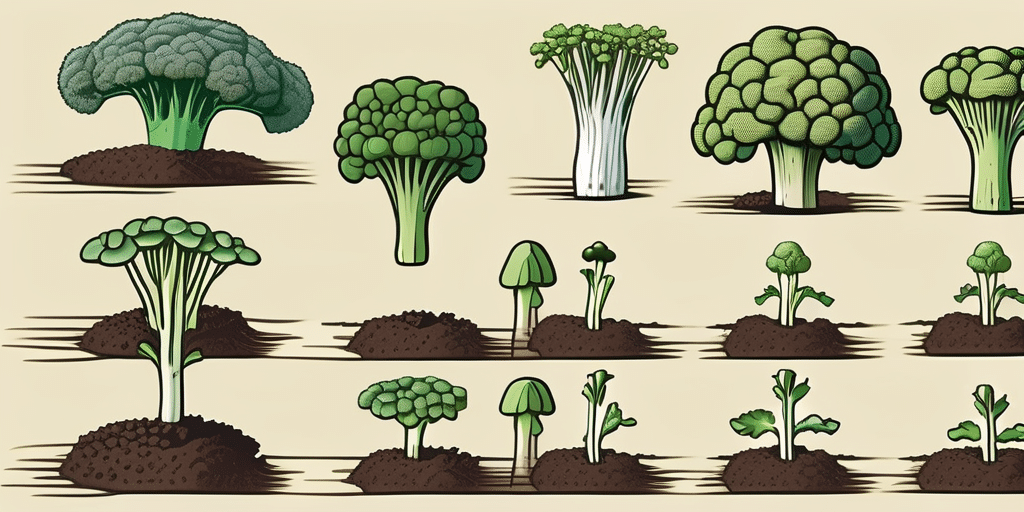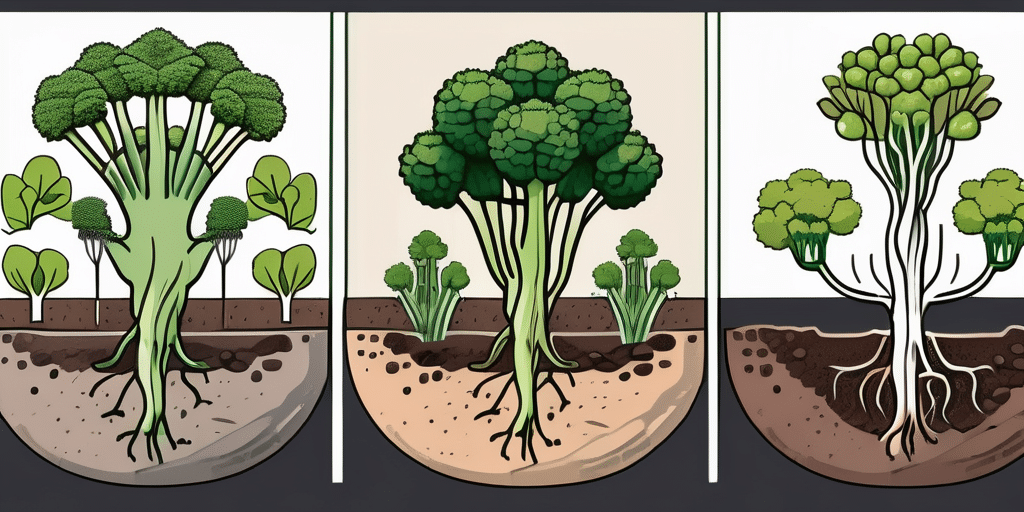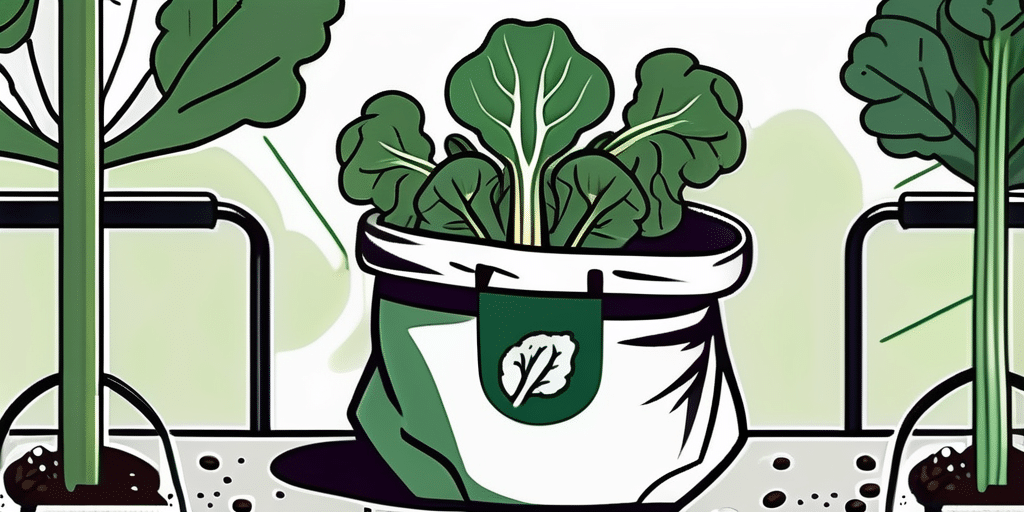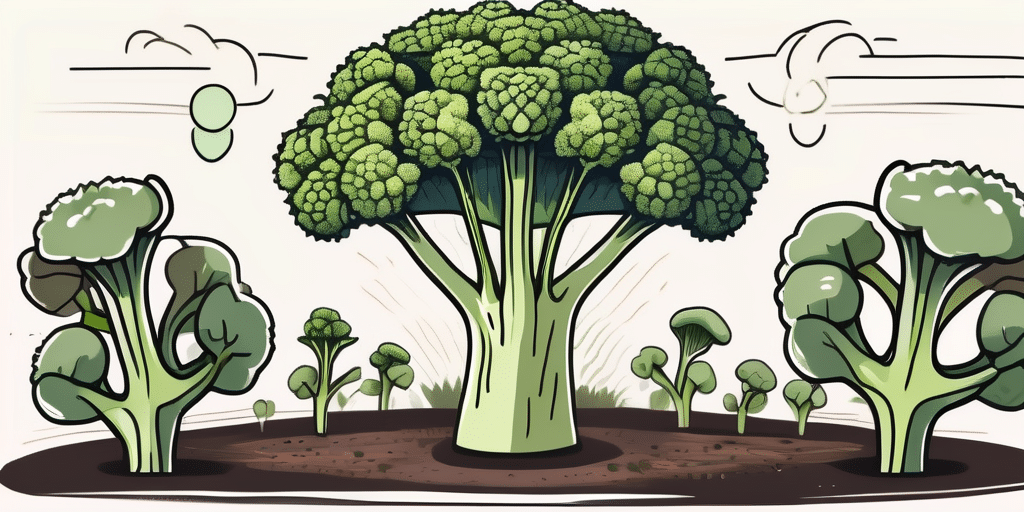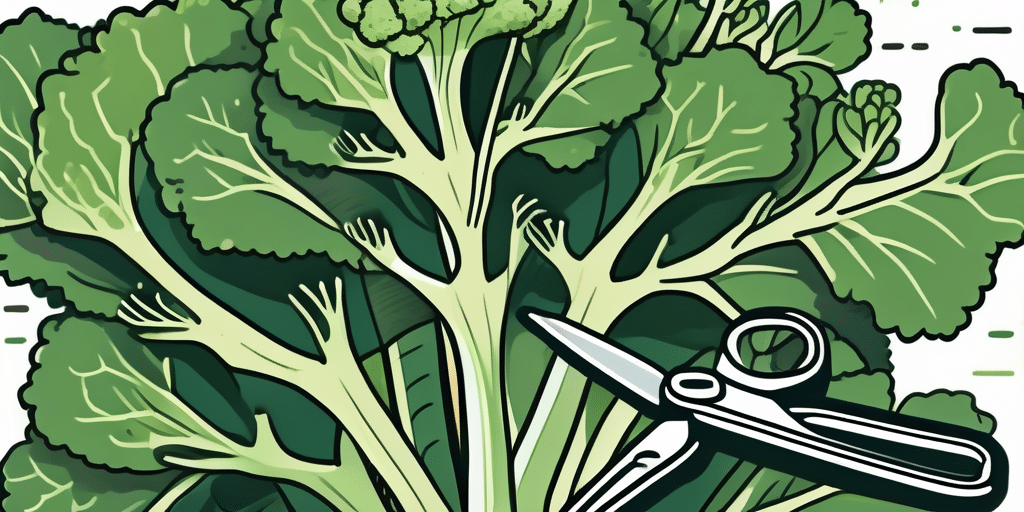Sprouting broccoli is a versatile and nutritious vegetable that can be grown in zones 7a and 7b. With proper planning and care, you can enjoy a bountiful harvest of this delicious crop. In this article, we will guide you through the process of growing sprouting broccoli in these particular zones.
Growing Sprouting Broccoli in Zones 7a and 7b
Before we delve into the specifics, let’s first understand the climate and hardiness of zones 7a and 7b. These zones are characterized by mild winters and hot summers, providing favorable conditions for growing sprouting broccoli.
Sprouting broccoli, also known as broccoli raab or rapini, is a cool-season crop that thrives in cooler temperatures. It is often grown as a fall or early spring vegetable in these zones.
One key factor to consider when growing sprouting broccoli in zones 7a and 7b is the soil quality. This vegetable prefers well-drained, fertile soil with a pH level between 6.0 and 7.0. Amending the soil with organic matter such as compost or aged manure can help improve soil structure and fertility, providing an ideal growing environment for sprouting broccoli.
When planting sprouting broccoli in these zones, it is important to choose a sunny location with at least 6-8 hours of sunlight per day. Adequate sunlight is crucial for the development of healthy broccoli plants and the production of flavorful florets. Additionally, providing consistent moisture through regular watering is essential for ensuring proper growth and preventing stress-induced issues such as bolting.
Climate & Hardiness in Zones 7a and 7b
The USDA hardiness zone map divides North America into 13 zones based on average annual minimum temperatures. Zones 7a and 7b have minimum temperatures of 0 to 5°F (-18 to -15°C) and 5 to 10°F (-15 to -12°C) respectively.
When choosing sprouting broccoli varieties, look for those that are recommended for zones 7a and 7b. These varieties are adapted to the specific climatic conditions, ensuring higher chances of success.
It’s important to note that while the USDA hardiness zones provide a general guide for plant selection, microclimates within these zones can vary significantly. Factors such as elevation, proximity to bodies of water, and urban heat islands can all influence local temperatures. Therefore, it’s beneficial for gardeners in zones 7a and 7b to observe their specific growing conditions to make more informed plant choices.
In addition to considering the hardiness of plants, gardeners in zones 7a and 7b should also pay attention to the length of the growing season. With the relatively mild winters in these zones, there is an extended period for cool-season crops like broccoli to thrive. By selecting varieties that mature at different rates, gardeners can stagger their plantings to ensure a continuous harvest throughout the season.
When to Plant Sprouting Broccoli in Zones 7a and 7b
The timing of planting sprouting broccoli is crucial for a successful crop. In zones 7a and 7b, you can plant sprouting broccoli in both fall and early spring.
In the fall, start seeds indoors around 8-10 weeks before the first expected frost date. Transplant the seedlings into the garden when they are 4-6 weeks old, ensuring they have at least 3-4 true leaves.
It’s important to note that sprouting broccoli is a cool-season crop, thriving in temperatures between 45-75°F. In zones 7a and 7b, the fall planting allows the broccoli to establish before the winter chill sets in, giving it a head start for the spring growth spurt.
- Choose a sunny location for your sprouting broccoli plants, as they require at least 6-8 hours of direct sunlight daily.
- Prepare the soil by adding well-rotted compost or organic matter. This will improve drainage and provide essential nutrients.
- Plant the seedlings at a spacing of 18-24 inches apart, with rows 24-36 inches apart.
- Water the newly transplanted seedlings thoroughly and keep the soil consistently moist.
In the early spring, you can directly sow sprouting broccoli seeds in well-prepared soil. Follow the same spacing guidelines as mentioned above.
When planting in early spring, keep in mind that sprouting broccoli is a heavy feeder. Consider incorporating a balanced fertilizer into the soil before planting to ensure the plants have access to the necessary nutrients for robust growth. Additionally, mulching around the plants can help retain soil moisture and suppress weed growth, promoting a healthier broccoli crop.
When to Harvest or Pick Sprouting Broccoli in Zones 7a and 7b
Sprouting broccoli is a delightful addition to any garden, offering a bountiful harvest of nutritious and delicious florets. In Zones 7a and 7b, the ideal time to harvest sprouting broccoli typically falls between 60 to 90 days after planting. However, this timeline can vary based on the specific variety cultivated and the prevailing growing conditions in your region. The key to a successful harvest lies in picking the broccoli at the perfect moment, ensuring that the heads are tender and bursting with flavor.
As you tend to your sprouting broccoli plants, keep a watchful eye on their progress. Look out for tightly packed, vibrant green heads that signal readiness for harvesting. It’s crucial not to delay the harvest, as overripe heads can quickly turn tough and develop a bitter taste, detracting from the overall quality of your yield.
- Monitor the plants regularly and look for tight, green heads. Avoid waiting too long, as the heads can become tough and bitter if left to mature for too long.
- When the heads reach the desired size, use a sharp knife or pruners to cut them from the plant, making a clean cut just below the head.
- Leave the side shoots intact, as they will continue to produce smaller heads for extended harvesting.
Once you’ve identified heads that are of optimal size and color, it’s time to execute a precise harvest. Employ a sharp knife or garden pruners to carefully sever the heads from the main stalk, ensuring a clean cut just below the base of the head. By employing this method, you help promote healthy regrowth and encourage the development of additional side shoots, prolonging your harvesting season and maximizing your overall yield.
By following these guidelines and staying attuned to the needs of your sprouting broccoli plants, you can savor a continuous supply of fresh, homegrown produce that will elevate your culinary creations and bring a sense of satisfaction to your gardening endeavors. Remember, the journey from seed to harvest is a rewarding one, filled with opportunities to nurture and enjoy the fruits of your labor.
Frequently Asked Questions
Here are some common questions and answers related to growing sprouting broccoli in zones 7a and 7b:
- 1. Can I grow sprouting broccoli in containers? Yes, sprouting broccoli can be grown successfully in containers. Choose a container with a depth of at least 12 inches and ensure it has drainage holes.
- 2. How often should I water sprouting broccoli plants? Water the plants deeply once or twice a week, depending on the weather conditions. Aim for about 1 inch of water per week, either through rainfall or irrigation.
- 3. Are there any companion plants that benefit sprouting broccoli? Yes, sprouting broccoli benefits from being planted alongside onions, carrots, garlic, and lettuce. These companion plants can help deter pests and enhance the overall health of your garden.
- 4. How should I store harvested sprouting broccoli? Refrigerate harvested sprouting broccoli heads in a plastic bag or airtight container. They can stay fresh for up to a week.
- 5. Can I save sprouting broccoli seeds for future planting? Yes, you can save sprouting broccoli seeds if you allow a few plants to fully mature. Harvest the seed pods when they turn brown and dry. Remove the seeds and store them in a cool, dry place for future use.
Now that you have the essential knowledge on how to grow sprouting broccoli in zones 7a and 7b, it’s time to roll up your sleeves and start planting. With proper care and attention, you’ll soon be enjoying the fresh taste of homegrown sprouting broccoli!
Join the How to Grow Everything Community
Ready to transform your green space into the garden of your dreams? Subscribe for free to How to Grow Everything and unlock a treasure trove of personalized gardening advice tailored to your specific zone, experience, and interests. Dive into our extensive collection of gardening articles, enjoy special offers, and receive the best gardening tips directly to your inbox. Join our family of garden enthusiasts and start growing your knowledge while you grow your garden—100% free, no spam, just pure gardening gold.


